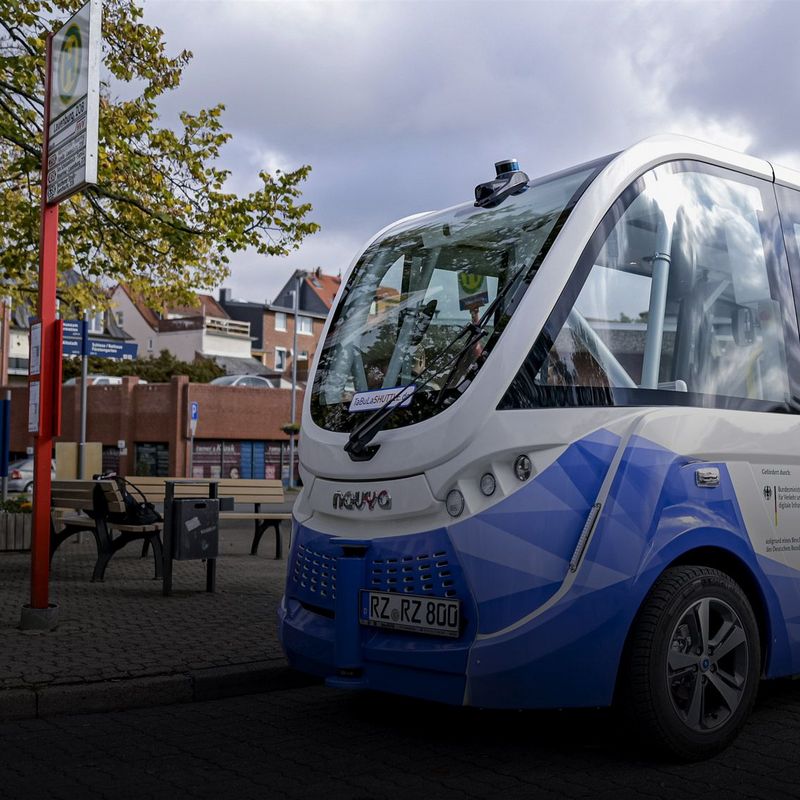01. April 2021
More and more people are opting for green electricity for the sake of the environment. But just having “green electricity” on the label is no guarantee of benefits to the environment. This is because green electricity is not clearly defined in Germany. Certificates and quality seals are intended to provide electricity customers with the guidance they need. Environmental expert Ulrich Walter from TÜV NORD CERT explains the requirements energy suppliers need to meet for the “Geprüfter Ökostrom” (“Certified Green Electricity”) TÜV NORD certificate to be awarded and what is involved in this kind of certification.
#explore: What requirements does an electricity provider need to satisfy for certification?
Ulrich Walter: First of all, 100 percent of the electricity has to be demonstrably generated from renewable energy sources. One of the other purposes of the certificate is to push ahead with the expansion of renewables and, with it, the energy transition. This means that at least one third of the electricity must come from wind, solar or hydropower plants that are no older than six years. Alternatively, the electricity provider can invest a set amount in the construction of new plants. As a rule, this is 0.25 cents for every kilowatt hour of green electricity. In general, the green electricity provided by suppliers mustn’t come from plants that are already being subsidised under Germany’s Renewable Energy Sources Act (EEG) – this is prohibited by the ban the EEG contains on so-called double marketing. After all, this subsidy is already being financed by every electricity customer through the EEG levy on their electricity bill.
"The certificate gives customers the assurance that they can make their decision with confidence based on the information given by the provider"
What is the point of this kind of green electricity certificate?
As the customers’ “eye”, we make sure that the electricity they get is actually of the quality and derived from the sources promised by the provider. With green electricity, consumers aren’t buying a physical product whose properties they can check – they have to rely instead on the information provided by the energy supplier. The reliability of this information is one of the most important criteria that we examine. After all, it will guide the decision as to whether to buy electricity from that particular company. The certificate gives customers the assurance that they can make their decision with confidence based on the information given by the provider, because an independent third party has verified the information and found it to be correct.
How does certification actually work?
In the first step, we check the hard numbers: what volume of green electricity has the energy supplier sold in the past year? For its part, how much green electricity has it bought for its customers, and from which plants? The supplier has to provide evidence of this in the form of proofs of origin from the register of the Federal Environment Agency. This kind of document certifies how and where the electricity was produced, while ensuring that this specific volume of electricity can only be sold once. During the on-site audit, we also look specifically at whether the method by which the green electricity volumes bought by customers are recorded in the provider’s system is conclusive. We also request samples of the consumption of individual anonymous electricity customers: we can also fully trace how the consumption of a private household, which might be 3,000 kilowatt hours, is accounted for in the total number of megawatts of power sold by the energy supply company during the year. In addition to the previous year’s balance sheet, energy suppliers also have to provide a breakdown of how and where they intend to stock up on green electricity and proofs of origin in the current year to supply old and new customers. We then analyse whether these figures tally and if they’re conclusive.
What are the next steps?
In the next step, we look at the goals the company is pursuing to promote renewable energy production. Some municipal utilities, for example, operate their own small wind farms and combined heat and power plants with biomethane, and more and more are building charging stations for electric vehicles to supply them with green electricity. If energy suppliers commit to investing a certain amount per kilowatt hour sold, they have to detail how and where they intend to use this money to expand the renewables portfolio. Just to present an action plan is not enough. In the annual monitoring audit, we can then also see which of these objectives the energy suppliers have already implemented and what they’ve undertaken to do for the future.
How do you assess whether the energy supplier is also advertising its green electricity correctly to consumers?
We examine its websites, invoices and tariff and price sheets and check whether the properties of the green electricity advertised correspond to what we’ve found in the audit. We also look at what the energy supplier is generally saying about itself and its activities in the renewables field. If, for example, it states that it has built wind farms or biomass cogeneration plants, we will check whether these are also reflected in its plans to expand the use of renewables. Basically, we’re really strict when it comes to ensuring that companies with our seal of approval only advertise things that we’ve also verified and which are accordingly covered by the certificate.
What would a critical case look like here?
Many of the energy suppliers we’ve certified make the generation of their green electricity carbon neutral using by certificates to that effect. Emissions are also generated during the construction and operation of wind or hydropower plants – turbines have to be replaced, and the staff offices need electricity and heat. These emissions are very low and account for only a fraction of the German electricity mix. But if the energy supplier advertises this electricity as carbon neutral, it must acquire the appropriate certificates, for example for independently validated and verified reforestation projects, to compensate for the emissions. And all this has to be verified by us. In the audit, we look at whether the relevant certificates are available or whether the company still needs to take further steps before it can justifiably refer to its electricity as “carbon neutral”. In this way, we ensure that the information provided by suppliers can be relied on by their customers.
These might interest you too:
About Ulrich Walter
© TÜV NORD
Ulrich Walter is an environmental expert and head of the Biogas, Green Electricity and EEG department at TÜV NORD CERT.



